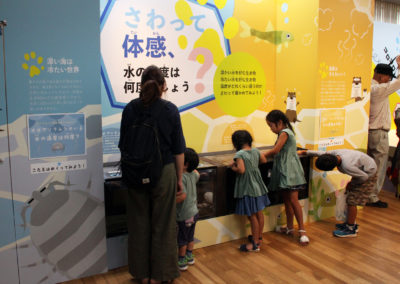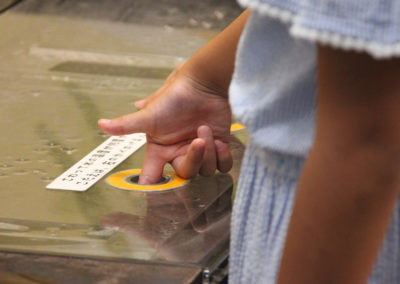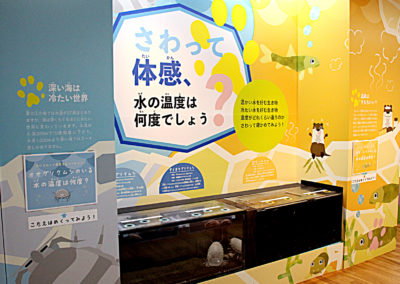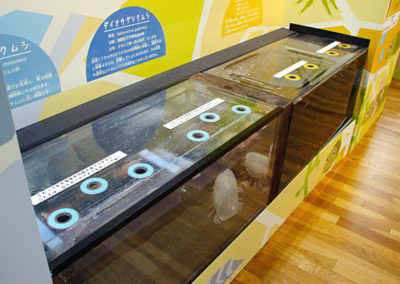Aquarium Presenting the Beauty of Deep Sea Creatures in Summer Festival
Sagamigawa Fureai Science Museum was opened on November 15, 1987, with the aim of promoting and preserving the nature of Sagami River. It was later renovated and reopened on March 26, 2014, with the newly built Aquarium Sagamihara to strengthen the connection between people and the river, raise awareness of environmental protection, and promote the exchange of ideas. About 100 species of creatures that inhabit Sagami River are exhibited in the museum.
A special exhibition “Touch and Feel Summer Festival” was held between July 13 and September 24, 2018, in which we installed an anti-condensation tank as an exhibition aquarium. At the event, the beauty of deep sea creatures like giant isopod were shown.
The fish tank has the function of dew condensation prevention, which is really helpful.
“To us, whenever cold water and deep sea creatures are displayed, dew condensation is unavoidable.“
Mold might grow as a result. It also takes us extra effort on wiping dew; and it might cause damage to the tank. That’s why we are hesitant to do so.
This anti-condensation tank has solved the problem.
Despite the fact that it is especially hotter, more humid with heavier rainfall this year,
the deep sea creatures can be exhibited clearly without any formation of dew condensation.
This amazing aquarium is easy to manage and surprisingly affordable.
No More Dew Condensation thanks to the Special Aquarium Structure
There are four distinct seasons in Japan. While it is inevitably hot and humid in summer, dew condensation in fish tanks is unavoidable. As a result, it is difficult to show the water creatures to the visitors clearly, making it a big challenge to aquariums.
We have produced this anti-condensation tank by using two layers of acrylic sheets with special gas filled in between. It helps reduce heat transfer, and dew formation can be therefore prevented. No dew is formed on the surface of the fish tank in the exhibition hall at a room temperature of around 26°C and a water temperature at 7°C. Although the effectiveness might be altered by air conditioning, our experiment has proved that there is no condensation even with cooler water. In addition, the low water temperature can be maintained for a long time owing to excellent insulation.
As this cold water fish tank is specially made to allow visitors to “touch and feel” the giant isopods, the reinforcing plate (aka. centre flange) which is normally placed in the centre is removed. The strength is reinforced by the thickness of the acrylic sheets and the bonding method instead. As a result, the strength remains the same, and the fish tank is perfect for observation, as well as touch and feel, since there is no obstacle like flange in between. This fish tank can be made into any shapes according to customer requirements and the types of creatures.
The development of anti-condensation tank has made a significant contribution to the exhibition of cold water and deep sea creatures such as giant isopod and lumpfish. Are you also interested in growing different cold water creatures in this type of fish tank with a dew-free viewing window?
%
Interior Simplicity
Estimation (10K JPY)
Lead Time (Days)
%
Customer Satisfaction
Sagamigawa Fureai Science Museum
1-5-1 Suigotana, Chuo-ku, Sagamihara-shi, Kanagawa, JAPAN 252-0246
TEL: +81-42-762-2110
Sagamigawa Fureai Science Museum
1-5-1 Suigotana, Chuo-ku, Sagamihara-shi, Kanagawa, JAPAN 252-0246
TEL: +81-42-762-2110
INSTALLATION CASE
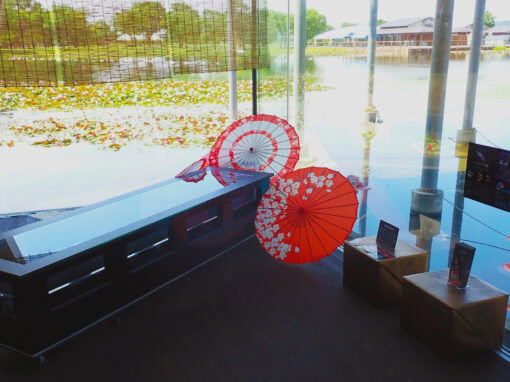


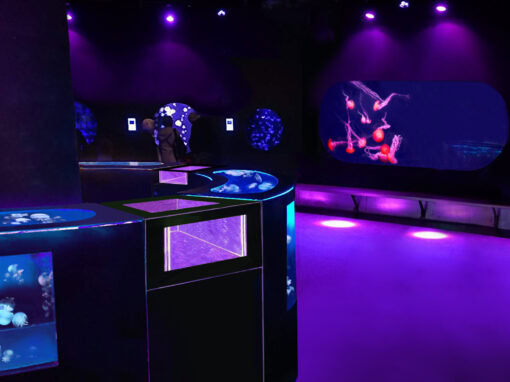
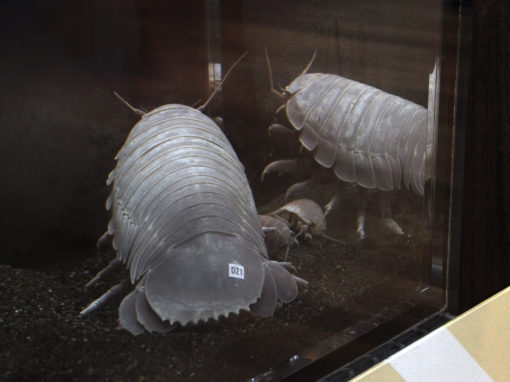

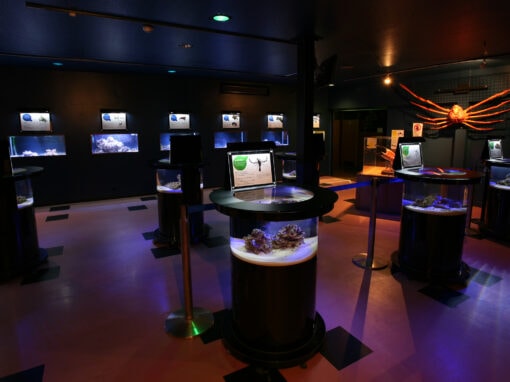

Spring Inc.
We are an innovator of aquarium, manufacturing acrylic tanks
including the world-patented Bird’s Eye Aquarium
in our own factory in Yamanashi, JAPAN.
